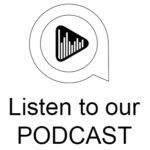Well here we are. Smack in the middle of a global pandemic. I send wishes of good health to all of you!
I thought it might be interesting to take a look into how we work in light of so much of the workforce now being asked to work from home. Here’s what I know and so do others who study this sort of stuff… it’s not easy in the beginning. And for most workers, this will be something new. Sure, everyone has gotten used to be able to work from home and on the road, but doing it full time is a different matter.
Americans have a reputation for having one of the longest workweeks and are often admired for their perceived work ethic. But when you lift the hood, the data tells a very different story. Despite all the extra hours, we aren’t actually more productive. Yep, we aren’t. There’s lots of reasons why and many of them revolve around the fact that we tend to enjoy our working surroundings and the people we work with. In many cases our offices have become our home away from home. All of that leads to extra time spent in offices, but not necessarily being more productive while we are there. And for the most part, that’s okay. It’s sort of like home schooling. Millions have found that the standard curriculum can be completed in hours less time every day. So it makes sense that if we have positions that have a set requirement for output and we have the tools to do achieve that output, we could accomplish more away from our offices. Oh and by the way, you’d think with all the new technologies, the load of hours would be less; but it’s not. It’s getting heavier. Studies show that people are working more, but getting less done. Why? Well it seems that we spend a lot of time on things that just don’t matter. So, the answer is waste less, produce more. Try to have fewer distractions, limit “always-on” mentality and see if you don’t have less anxiety and stress.
A couple of years ago Microsoft Japan experimented with a four-day workweek over the summer. About the same time, I suggested something similar for our company. But mistakenly, I suggested 10-hour days and no one wanted to do it. But what Microsoft found was productivity actually increased by 40%. Part of these gains was made by reducing the standard meeting duration from 60 to 30 minutes and capping attendance at five participants. Similar results were found when a New Zealand company implemented a similar trial, which increased productivity and work-life balance substantially. Sweden implemented a six-hour workday in 2015 and has enjoyed increased employee happiness and productivity ever since –even customers reported they were more satisfied. Many, many studies show that 5 – 6 hours is the most people work out of an 8 – 9 hour day. All of this makes sense. Think about the days you’re most productive. They tend to be those where you have the shortest window to complete everything. As Parkinson’s Law states, work fills the time allotted for its completion.
A December 2019 survey of 500 executives at Fortune 500 companies was done by Doodle, a scheduling technology provider. Almost all participants said that to advance their careers they are compelled to work extra hours, even when those extra hours don’t equate to meaningful outcomes. 44% of executives worked an average of 52 hours a week, and that number increased to 58 hours among 65% of senior executives. Shocking numbers from the study showed that employees are definitely busy in meetings, but they’re not busy actually working. Look at these stats on what happens in “in person” meetings; can you imagine what happens in conferencing meetings?
- 44% watch videos
- 40% take selfies
- 35% fall asleep
- 67% send texts
- 59% leave the room to take another call
- 57% work on other tasks
Wow, it seems we’re giving up a lot of time pretending to be present and appearing reachable. In the process, we’re perpetuating a culture of inefficiency where no one is actually present.
From the experiments at Microsoft and elsewhere, we’ve learned that it’s possible to accomplish more with fewer hours expended. Making a successful transition to having fewer hours in the office requires discipline. Actual hours spent working needs to be tracked – that means there must be an easy way to keep track of time spent working and communicate that with management. Employees should not be on personal social media during work hours. It may sound draconian, but employees taking short breaks during the day to check social media extends the number of hours they’re in the office or “working.” Meetings are clearly a big-time waster and suggestions for shortening them including having attendees’ rate whether a meeting was productive or not, removing chairs from conference rooms so attendees are forced to stand, and having no more than 5 people in attendance.
And now, because this is so important during these troubling times let’s address the most challenging hurdle of being more efficient, which hopefully leads to fewer necessary hours – getting employees to be comfortable staying away from the office. Work has become the centerpiece of identity for many of us and so even if the workday is physically shrunk by eliminating waste, if we continue to define self-fulfillment by the number of hours spent at work, we’re doomed. During this unknown duration of many of us working from home, there’s going to be a negative impact on our psyche. I suggest we use this experience to examine our own work habits. Maybe if we find great ways to be productive now, we can carry them forward when things return to “normal” and shorter hours at work might not only be possible, but emotionally fulfilling and socially acceptable even for high-achievers like you!
I leave you this week being concerned for us all, but taking comfort knowing we are a nation that always rises to meet challenges head on and this time I think we do so with a great sense of community above self! Be smart. Be safe. Be healthy.


